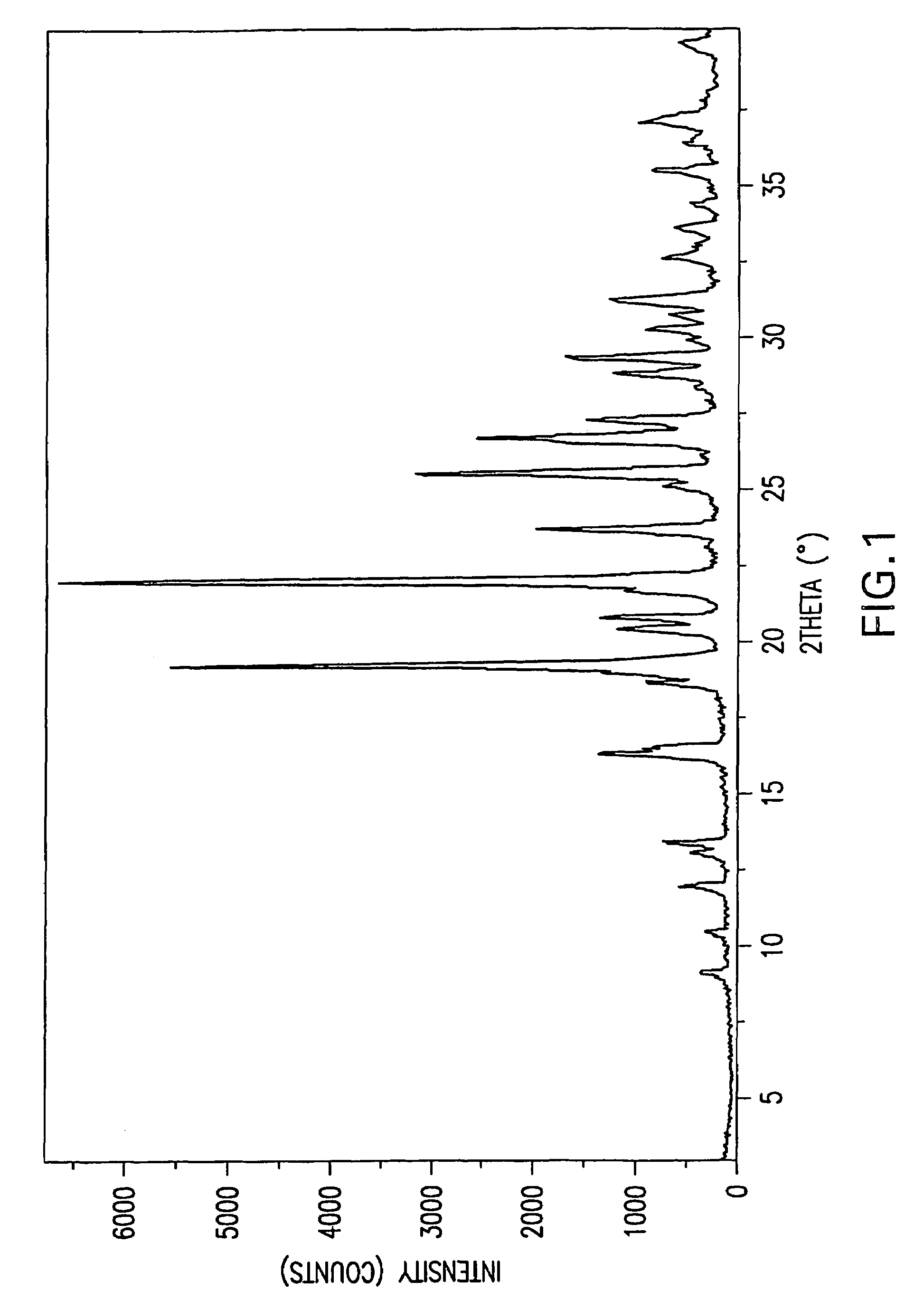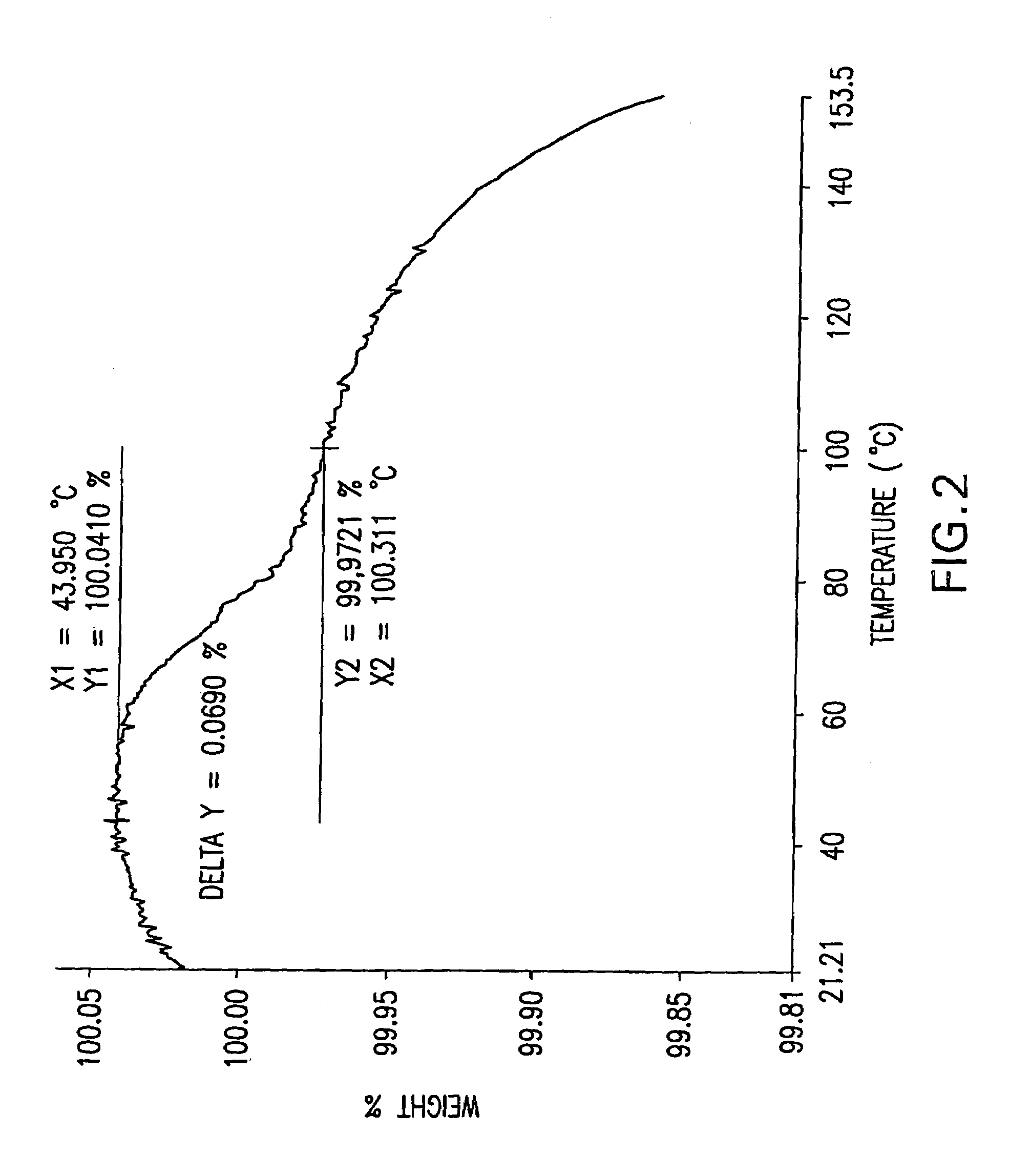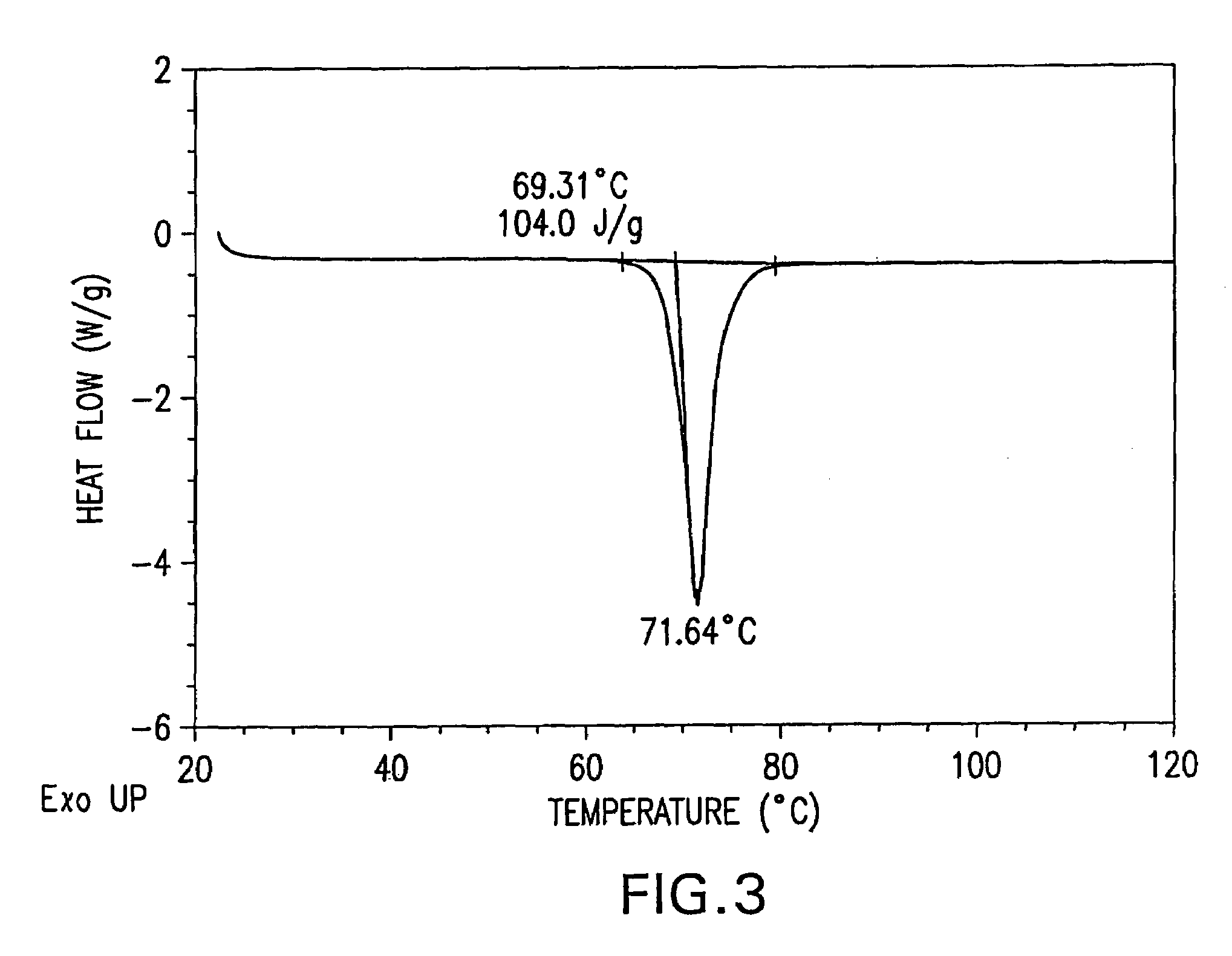Formation of tetra-substituted enamides and stereoselective reduction thereof
a technology of substituting enamides and stereoselective reduction, which is applied in the preparation of carboxylic acid amide optical isomer preparations, organic chemistry, and cyanide reaction. it can solve the problem of excessive amounts of undesired isomer
- Summary
- Abstract
- Description
- Claims
- Application Information
AI Technical Summary
Benefits of technology
Problems solved by technology
Method used
Image
Examples
example 1
2-methyl-2-{[5-(trifluoromethyl)pyridin-2-yl]oxy}propanamide
[0106]
[0107]In a 12 L 3-neck separatory funnel equipped with overhead stirrer, nitrogen inlet and thermocouple, a solution of 2-methyl-2-{[5-(trifluoromethyl)pyridin-2-yl]oxy}propanoic acid (772 g) in MeCN (6.5 L) was prepared. Thionyl chloride (316 mL) was added over 30 minutes. The resulting solution was stirred at room temperature for 2 h. A separate 22 L 3-necked round bottom flask equipped with overhead stirrer, nitrogen inlet and thermocouple, was charged with 30% NH4OH (aq) (5 L) and cooled to −20° C. The acid chloride solution from the separatory funnel was added to the solution of NH4OH at such a rate that the internal reaction temperature was kept at −15 to −20° C. over 2 h. Once the addition was complete, the resulting slurry was warmed to room temperature and stirred for an additional 1 h. The reaction mixture was transferred to a 50 L extractor containing toluene (15 L) and water (15 L), and the layers were sep...
example 2
3-[1-(4-chlorobenzyl)-2-oxopropyl]benzonitrile
[0109]
Step A: Catalyst Preparation
[0110]A 4-neck 12 L round bottom flask equipped with thermocouple, overhead stirrer, rubber septum, N2 inlet, and gas adapter connected to a bubbler was charged with palladium acetate (12.8 g), tri-o-tolylphosphine (69.9 g), and dimethylformamide (2.8 L). N2 was bubbled through the solution for 20 min at ambient temperature. The flask was then heated to 56° C. on a heating mantle, and the mixture was stirred at 60° C. for 20 min. A solution of diethylzinc in toluene (1.1M, 78.0 mL) was added via syringe. The resulting suspension was stirred at 56° C. for 45 min.
Step B: Cyanation Reaction
[0111]A 4-neck 12 L flask equipped with a mechanical stirrer, thermocouple, nitrogen inlet, and gas adapter connected to a bubbler was charged with 3-(3-bromophenyl)-4-(4-chlorophenyl)butan-2-one, zinc cyanide (201 g), and dimethylformamide 4.0 L. Nitrogen gas was bubbled through the suspension for 30 min at room temperat...
example 3
3-(4-chlorophenyl)-2-(3-cyanophenyl)-1-methylprop-1-en-1-yl 4-methylbenzenesulfonate
[0114]
[0115]A 4-neck, 12 L flask equipped with a mechanical stirrer, thermocouple, and nitrogen inlet was charged N,N-dimethylacetamide (7.2 L), followed by 3[1-(4-chlorobenzyl)-2-oxopropyl]benzonitrile (Example 2, 744 g), then bubbled with nitrogen through the reaction mixture for 30 minutes at room temperature.
[0116]The mixture was cooled to −10° C., and NaOtBu (265 g) was added as a solid in one portion with stirring (tmax=−2° C.). The solution was allowed to stir with cooling until the exotherm stopped and the temperature began to drop (approx. 2 minutes). The cooling bath was removed, and the reaction was warmed to room temperature, then stirred for 1 hour. The mixture was cooled to −20° C. and p-toluene sulfonic anhydride (Ts2O, 893 g) was added as a solid in two portions with stirring, keeping the temperature below −5° C. (tmax=−8° C.). The mixture was allowed to cool back to −10° C. and stirr...
PUM
| Property | Measurement | Unit |
|---|---|---|
| hydrogen pressure | aaaaa | aaaaa |
| enthalpy | aaaaa | aaaaa |
| peak temperature | aaaaa | aaaaa |
Abstract
Description
Claims
Application Information
 Login to View More
Login to View More - R&D
- Intellectual Property
- Life Sciences
- Materials
- Tech Scout
- Unparalleled Data Quality
- Higher Quality Content
- 60% Fewer Hallucinations
Browse by: Latest US Patents, China's latest patents, Technical Efficacy Thesaurus, Application Domain, Technology Topic, Popular Technical Reports.
© 2025 PatSnap. All rights reserved.Legal|Privacy policy|Modern Slavery Act Transparency Statement|Sitemap|About US| Contact US: help@patsnap.com



